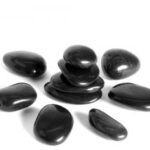If you are looking for a frugal way to baby your face, you may want to consider a DIY glycolic acid peel. I did this recently to rid myself of a bad case of dry skin brought on by a long Michigan winter. It was easier and cheaper than I thought it would be.
Spas and dermatologists offer glycolic acid peels of varying strengths. If you’re considering trying a DIY peel, it’s probably best to start out with a formula of the lowest available strength. I started with a solution of 30%.
DIY glycolic acid peels can be found in many online shops, including Ebay. Most products containing Glycolic Acid include detailed instructions and warnings which should be read and considered carefully.
The Patch Test
The patch test is done to make sure you are not allergic to the ingredients of the formula. Be sure to follow the patch test directions that come with your DIY kit.
Preparation
Read the entire instructions that come with your peel before preparing so you will know what items to have on hand.
My kit suggested applying liquid soap with a cotton swab to any stinging spots during the peel. For neutralizing the acid, a pinch of baking soda mixed with water was called for.
Application
Some DIY glycolic acid peel kits include an applicator brush, but the formula can also be applied with the fingertips. It’s important not to rub the acid into the skin.
The glycolic acid formula should not be used near the eyes, mouth or mucous membranes. If your peel doesn’t have specific directions for application, search for information or contact a professional for advice to be sure that you know how to use it correctly.
I started with a clean face and applied the solution as directed. The suggested time to leave the mixture on was two to three minutes. Since my face didn’t sting terribly after two minutes, I decided to leave it on for the full three minutes.
Neutralization
Neutralizing the acid is necessary to halt its work so you can safely wash your face. I suggest covering your eyes well with a folded wash cloth during this step.
After neutralizing twice with the baking soda solution, I rinsed my entire face well with lukewarm water. This is important because any acid left behind could burn the skin.
Drying & Moisturizing
Drying the face after a peel should be done gently by patting. Applying a fragrant moisturizer after drying feels wonderful and assists in the “peeling” process.
Peeling
Although the process is called a peel, the skin doesn’t usually peel noticeably afterward. The process is subtle and gradual.
My instructions indicated that some redness may occur, especially on fair or sensitive skin, but I didn’t experience any.
Discomfort
I found the DIY glycolic acid peel to be a much more pleasant experience than I expected it to be. I did feel a slight stinging sensation but nothing I would describe as painful. The wonderfully soft feeling of my skin afterward is worth the small discomfort I experienced during the process.




